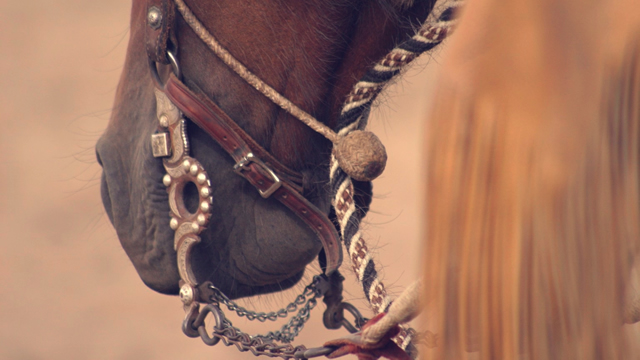Written by Martin Black
This article originally appeared in Eclectic Horseman Issue No.55
People often ask what kind of bit they should use or what kind of bit I would use for a particular situation. The fact is there are more variations of bits available today than most people would ever have horses to ride them on.
With people’s “it’s not my fault” attitude, it’s easy to find an excessive number of tools to fix any problem your horse may develop. Personally, I have a little different outlook on that. Studying horses and the way they travel and maneuvers they can do before we have any influence on them has taught me that we need to take their best and give them our best. What this means is that we don’t need to look for correction devices to fix a horse; we just need to correct our presentation.
I have written before on the differences between signal bits and leverage bits; basically the differences lie in the way they are used. A leverage bit is meant to amplify the pressure or pain from our hands pulling on them whereas a signal bit is meant to amplify a signal from our hands. Here again the biggest difference could be just a different presentation with the same equipment.
If there is a problem, instead of looking in an arsenal of bits for a cure, I like to look for the cause. By eliminating the cause and just giving the horse a job, they can practice the maneuvers we want. They can and will find their natural way of placing their feet, the way God intended them to do.
When we run out of knowledge and resort to strength, there are always side effects, things we need to come back and fix or apologize for later. Like a lot of things, the shortcut in the long run is to take the necessary time to do it right the first time.
With all that said, I have for many years used the basic equipment of the buckaroos or vaqueros of the Great Basin. The plain and simple ring snaffle, California style hackamore, preferably with hair mecate and what most people refer to as a Spanish type bit, the spade, with rawhide reins and a nice silver headstall.
Some people will ask, why that type of reins? Why the silver headstall, what does that do? Is that necessary? In my opinion, yes, the right reins on the right head gear offers a better feel to the horse and in return the horse offers a better feel to us. As for the fancy silver and braid work, most buckaroos that take the effort to look good on the outside will want their horses feeling good on the inside.
But to understand this equipment we need to understand the philosophy that is meant to be used with it. Not that there is the “Mystery” or a big secret, that some people are led to believe. The unusual thing for some people is that it isn’t a quick fix, it’s a long, time-consuming process. It’s developing an art and like any art it takes practice and precision on our part. There are no shortcuts.
Time is what the old vaqueros had lots of, “mañana.” There’s a saying in reference to working with stock, “what we don’t get done today we can do tomorrow and if tomorrow doesn’t come, today doesn’t matter anyway.”
With this attitude, this philosophy, I enjoy taking the tools of the tradition I grew up around and with each horse I take from the hackamore through the two-rein and into the spade bit, they teach me a little more each time.
If you want to devote the time to become an artist with your horsemanship, try to develop your hands, your presentation and the feel you give your horse.
The difficult thing is the old guys that were really good artists with this process are nearly all in the grave and they took the knowledge with them. Today, the horse training world and the efficiency of ranching doesn’t allow enough time for people to make these horses the way they used to. But it can still be done; it just takes desire and dedication. And to me there’s not much as satisfying as the feeling of reaping the dividends of the time invested in a true bridle horse.
This article originally appeared in Eclectic Horseman Issue No.55


